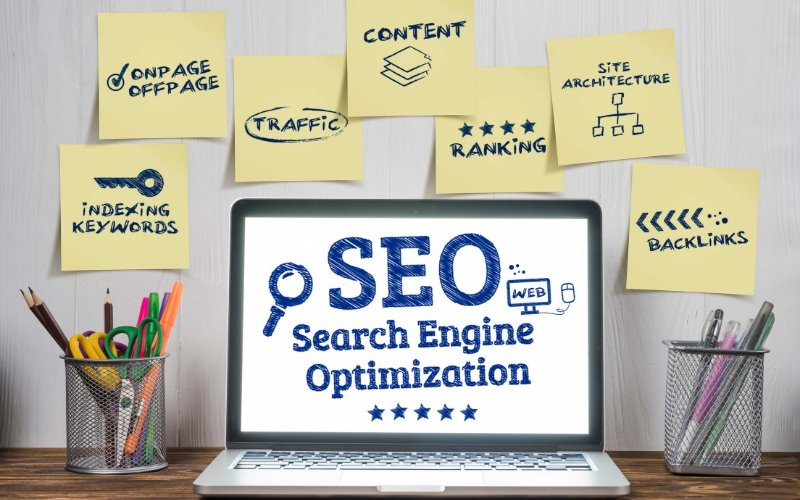In 2024, long-form content remains one of the most effective strategies for boosting search engine rankings. Long-form content typically ranges from 1,200 to 3,000 words and provides in-depth coverage of a particular subject, making it a valuable asset for improving SEO. It offers readers a thorough, well-researched piece of information while integrating keywords naturally. This format not only enhances user experience but also offers several SEO benefits, which we will explore below.
Why Long-Form Content Works Well for SEO

One of the key reasons long-form content is so effective lies in its ability to enhance keyword density without resorting to overstuffing. Unlike shorter pieces, long-form content provides ample space to include your primary keywords, secondary keywords, and long-tail phrases naturally throughout the text. This ensures your content remains relevant and optimized for search engines while maintaining readability and offering value to the reader.
When crafting long-form content, the structure and flow make it easier to weave keywords into headings, subheadings, body paragraphs, and even image alt text. For instance, a 2,500-word blog post allows you to repeat primary keywords several times across different sections without making the usage feel forced or unnatural. This strategic placement of keywords strengthens your content’s relevance to search queries, improving your chances of ranking for a wider range of search terms.
Additionally, long-form content enables you to diversify your keyword usage. Instead of relying heavily on a single phrase, you can incorporate variations and synonyms that cater to different search intents. For example, if your primary keyword is “digital marketing strategy,” you can also include variations like “online marketing approach,” “digital strategy planning,” or “SEO marketing tactics.” This not only broadens your content’s reach but also aligns it with more specific, targeted queries.
Another advantage of improved keyword density in long-form content is its ability to enhance the contextual relevance of your writing. Search engines increasingly prioritize content that provides comprehensive, in-depth information on a topic. By using keywords to connect related ideas and subtopics, you create a cohesive narrative that appeals to both search engines and readers.
Ultimately, long-form content strikes a balance between optimization and value, enabling you to rank higher while delivering informative and engaging content. This approach builds trust with your audience, encouraging longer session durations and repeat visits.
Dwell time, or the amount of time users spend on a webpage before returning to search results, is a crucial metric in search engine optimization (SEO). This user engagement factor serves as a strong indicator of content quality and relevance. Search engines like Google use dwell time to assess whether a webpage meets user intent. The longer users stay, the more likely it is that the page delivers valuable information, which can positively impact search rankings.
Why Long-Form Content Boosts Dwell Time
Long-form content naturally lends itself to increased dwell time because it provides comprehensive insights, answers, and solutions in a single resource. When users find all the information they need on your page, they are more likely to stay longer, explore additional sections, and even click through to other related content on your website. This behavior not only increases the time spent on your site but also reduces bounce rates, further reinforcing the value of your content.
Moreover, detailed articles often incorporate engaging elements such as subheadings, infographics, videos, and call-to-action (CTA) buttons. These features make it easier for users to navigate and consume information, encouraging them to stay engaged. By providing a mix of media and structured text, you create an experience that appeals to a wide range of preferences and attention spans.
How Dwell Time Impacts SEO

Dwell time acts as a feedback loop for search engines, signaling whether users find your content helpful. When dwell time is high, it indicates that users are interacting with your page in meaningful ways, such as reading, scrolling, or clicking through internal links. This engagement signals relevance and quality, which search engines reward with higher rankings.
For example, if two pages rank for the same keyword but one has significantly higher dwell time, Google is more likely to favor the page where users linger. This is because Google aims to prioritize content that satisfies user queries effectively. By focusing on increasing dwell time, you improve your chances of outperforming competitors in search engine results.
Strategies to Increase Dwell Time
To capitalize on the importance of dwell time, consider implementing the following strategies:
- Focus on User Intent:
Ensure your content answers user queries thoroughly and aligns with the intent behind their search. Identify common questions and pain points, then address them comprehensively within your article. - Enhance Readability:
Use short paragraphs, bullet points, and subheadings to break up large blocks of text. A clean and organized layout makes it easier for users to navigate and digest your content. - Incorporate Visual Content:
Adding visuals such as charts, images, and videos can significantly increase engagement. Videos, in particular, are highly effective at holding users’ attention and boosting dwell time. - Include Internal Links:
Guide users to related articles or additional resources on your website through internal linking. This not only keeps users on your site longer but also encourages deeper exploration of your content. - Write Engaging Introductions:
Hook your readers from the start with compelling introductions that clearly outline the value of your article. A strong opening encourages users to stay and read further.
Long-Form Content and User Retention
Providing long-form, high-quality articles ensures users find value in staying on your website. When users perceive your content as a reliable and exhaustive resource, they are more likely to bookmark it, share it, or return for future visits. This creates a positive cycle of increased dwell time, improved rankings, and greater audience loyalty.
By prioritizing strategies to increase dwell time, you not only enhance your SEO performance but also foster a better user experience, leading to sustained growth in engagement and visibility.
Backlink Opportunities High-quality long-form content is more likely to attract backlinks from other websites. When you provide comprehensive coverage on a topic, others in your industry are more inclined to reference your article as a resource. These backlinks are essential for SEO, as they increase your domain authority and trustworthiness in the eyes of search engines.
The more backlinks your content receives, the more credible it appears, which can significantly improve your ranking on search engine results pages (SERPs).
Best Practices for Creating Long-Form Content

To make the most of long-form content, ensure that it’s well-structured and easy to navigate. Here are some key practices:
- Use Headers and Subheaders: Breaking up the text with headers and subheaders improves readability and helps search engines understand the structure of your content.
- Include Visuals: Incorporate images, charts, and infographics to make the content more engaging and digestible.
- Focus on Quality: Quality always beats quantity. Make sure the information you provide is relevant, well-researched, and adds value to your audience.
- Internal and External Links: Strategically link to other relevant articles on your site and credible external sources. This helps with both SEO and user experience.
Conclusion
Long-form content offers substantial advantages for SEO in 2024. By improving keyword density, increasing dwell time, and attracting backlinks, it can significantly boost your search engine rankings. When done correctly, long-form content not only enhances your website’s visibility but also establishes your authority in your niche, making it a valuable component of any SEO strategy.

